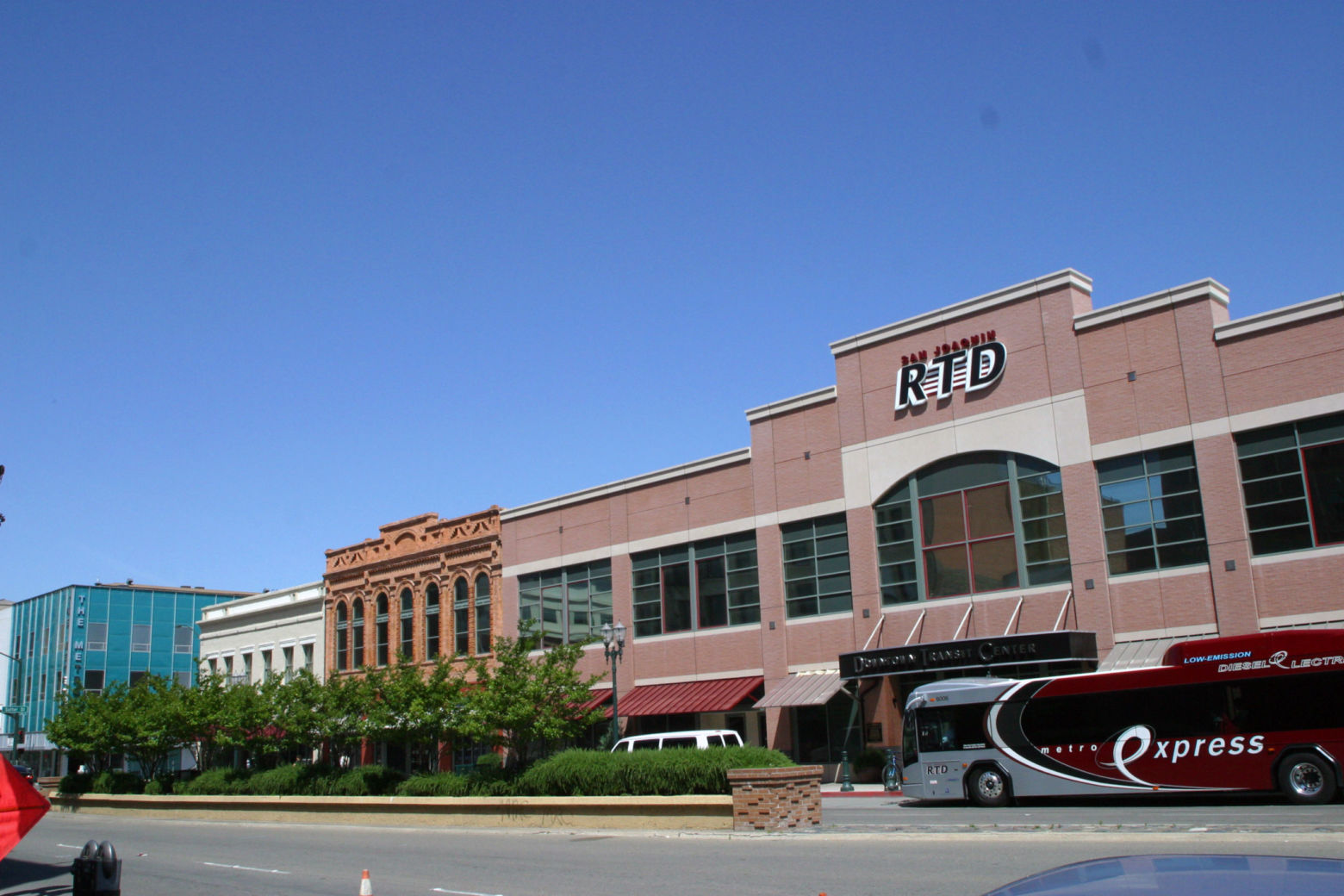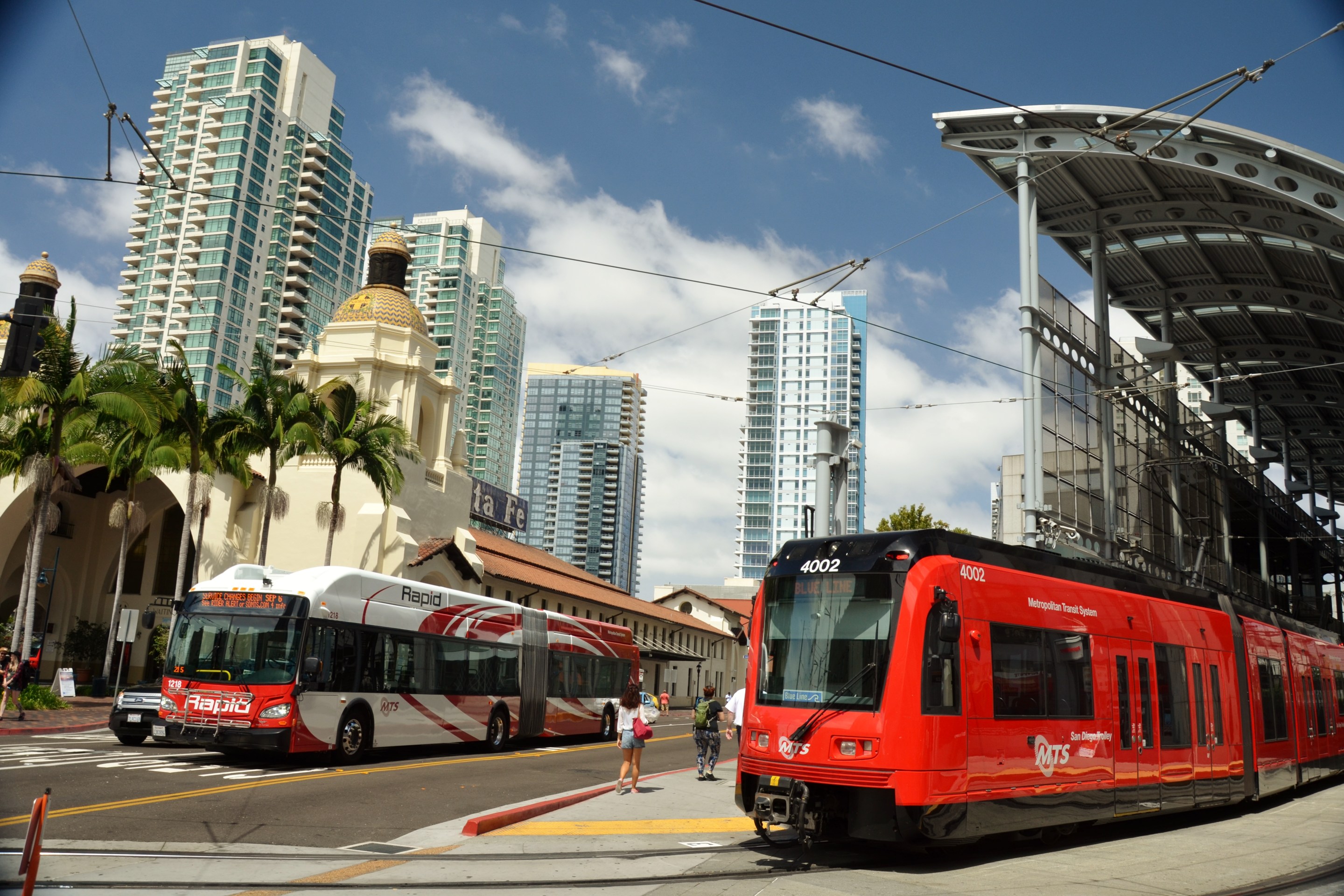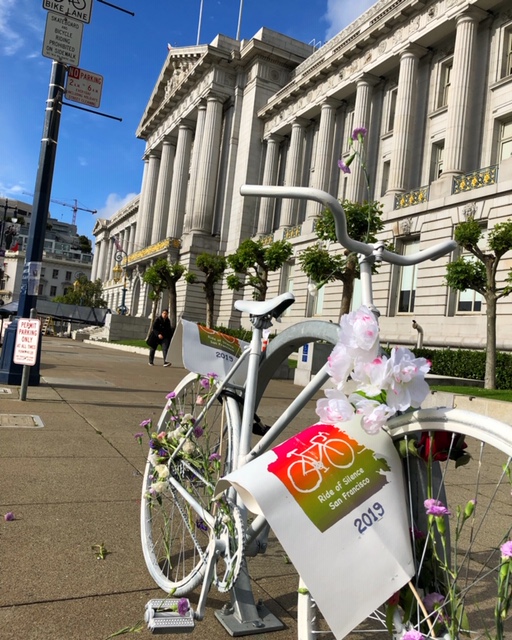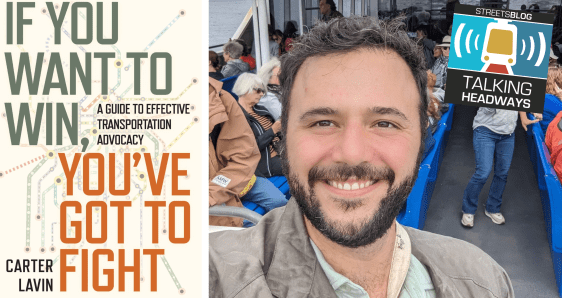There's lots of legislation pending in California that will impact the way California grows and tries to address the global climate emergency. One of the most important decisions the legislature has to make is whether, when, and how to reauthorize the state's cap-and-trade program.
In short, the program charges the state's largest polluters a fee and uses the money generated to pay for programs to battle Climate Change and Global Warming. The program sunsets in 2030 unless the legislature and governor reauthorize it.
Transcript:
Today, StreetSmart talks with Zack Deutsch-Gross, the policy director of TransForm about the program and why the state shouldn't wait until the last second to reauthorize cap-and-trade. For more on the program you can listen to the podcast below, read a transcript of our discussion, or read this blog post Deutsch-Gross wrote for TransForm.
Damien Newton - So thanks for being here with us today. A lot of regular Streetsblog readers will be able to pick up our conversation right away. But just in case, why don't we start with a brief discussion of what is cap-and-trade and why it's important that we're talking about reauthorization of this program right now.
Zack Deutsch-Gross - Happy to be chatting with you today.
So for listeners who don't know, I work for an organization called TransForm. We work to reshape transportation and housing decision making in a way that centers community needs and combats the climate crisis. We've been doing this work for about 30 years, and that includes making sure that we have a viable cap-and-trade program that is investing in these fundamental priorities.
Cap-and-trade started off about two decades ago as a way to reduce carbon emissions. Apologies for those who this is familiar to, but it sets a cap on the amount of greenhouse gases that are being produced in the state and then sells the right to pollute in the form of allowances.
The state gets money from those allowances to reinvest in solutions that reduce greenhouse gas emissions, such as infill affordable housing and public transportation.
Right now, today, the program generates about $4 billion dollars a year.
DN - How is that $4 billion dollars invested right now?
ZDG - About 60% of the program is continuously appropriated. That includes 25% to high speed rail, 20% to a program called “affordable housing, sustainable communities” which builds infill housing and supportive transportation infrastructure to reduce emissions.
The remaining 15% goes to two programs: the Transit Intercity and Inner City Rail Corridor Capital Program, and the “LCTOP,” the Low Carbon Transit Operations Program, funding vital transit and housing needs that we know are strategic and necessary to reduce GHG emissions. The other 40% is appropriated discretionarily by the legislature to additional reduction programs, including wildfire prevention.
DN - The original program had a deadline on it which is coming up.
It's not tomorrow, but it's in a couple of years. So the state is now beginning to talk about what changes, if any, do we want to make as we reauthorize the program? It seems as though reauthorizing the program is a slam dunk, that it's going to happen.
Cap-and-trade has gotten some flack from the left and the right over the years. You've written about this, and the link to the blog post that you wrote will be included with the text that accompanies this podcast for people that want more. But how can the state reauthorize this to make it the best program possible?
ZDG - First, we need to reauthorize it. You know, the allowances that are sold every quarter are already dipping as there's uncertainty on the program. While it doesn't expire until 2030, reauthorization in this cycle of the legislature is really important to keep making progress on reducing our emissions and investing in vital programs.
TransForm’s advocacy and our vision has three pillars.
One is supporting and maintaining these vital investments in affordable housing and sustainable transportation. The second is to add some flexibility to these transit programs.
Streetsblog listeners are familiar with transit agencies across the state that are facing fiscal cliffs. And so, we want some flexibility to make sure that we're not operating life-size model train sets.
The third is to reinvest and center environmental justice and frontline communities in the cap-and-trade program and GGRF, the greenhouse gas reduction fund, which funds these programs.
We know frontline communities are the ones bearing the cost of this pollution and the allowances are de facto permits to pollute. And so it's fundamental to TransForm and our allies, 50 organizations across the state, that have supported the principles we put together: we support and stand with EJ and frontline communities and their demands to make this program just, equitable, and help achieve our climate goals.
DN - On past episodes of StreetSmart, we had two people discussing high-speed rail. They looked at reauthorization of the cap-and-trade as a way to keep funding going for that project as there's federal uncertainty.
On another, we had Juan Matute, my old friend with UCLA, who was talking about the transit fiscal cliff and operations. The cliff is especially steep for the ones that are reliant on taxes more than they are farebox recovery.
He was talking about cap-and-trade as a possible way to help fill that in the long term need . Of course, there's also legislation to authorize ballot measures for more taxes and all sorts of different things going on to try and fix transit.
Is it possible for cap-and-trade to sort of fund those programs and these other programs that you were talking about and still center environmental justice? Or, are too many people putting too many hopes on it? Is it possible for this program to sort of be the stop gag that everyone's hoping it'll be?
ZDG - It is a great question. I think the answer is yes. And it is going to take more than just cap-and-trade to solve the climate crisis, to address the transportation needs in the CARB scoping plan, which says we need to double public transportation ridership.
That's double the investment. So cap-and-trade can't do everything. It can't be everything for everyone. But we see it as a vital step towards making these investments. And certainly, if we were to reduce the funding for transportation or housing through cap-and-trade, it would be detrimental to affordability and equity.
There is a solution. I would point to the California transportation budget, which continues to build and expand highways at the expense of vital transportation and active transit investments.
We see cap-and-trade and building partnerships between transportation, housing, environmental justice advocates as a way to get the best possible outcome for this program and also build the power necessary to take on the highway builders and the industry that wants to build highways through black and brown communities, wants to increase our emissions, and increase the cost of driving instead of investing in in transit, walking, biking and solutions we know communities need.
DN - Given the imminent rollback of the minimal federal environmental program protections and given the rollback…well the expected rollback of transit and transportation funding at the federal level… stuff is all almost definitely going to happen unless the courts step in. Does that change the calculus of what we should be doing when we talk about cap-and-trade or any sort of state funding?
Or has this been baked into the planning since the November election in how we have to plan how to do our state transportation funding?
ZDG - I think it absolutely increases the urgency. California needs to be a climate leader. It has historically been so, and it's increasingly necessary given the federal uncertainty.
Unfortunately, sometimes our elected leaders are more interested in recording podcasts than taking bold action.
DN - Hey, hey, hey, we're recording one now.
ZDG - You're right. Podcasts are great. They're a key part of the solution, but we need to be involved.
DN - I know what you're referring to. I wasn't actually offended.
ZDG - Good. Hopefully your listeners will too.But no, we need to do more. I think we can't rely on the federal government to solve California's transportation and housing needs.
We need to be showing that California is a model for a clean, green, thriving economy. And that starts with the cap-and-trade program that centers the communities most impacted by the climate crisis and invests in affordable housing and sustainable transportation that makes California more affordable and accessible for everyone.
DN - So there has been legislation introduced to reauthorize the cap-and-trade program.
Do you have any sort of feeling on whether this is legislation that's going to be moving this session, if this is something that's a placeholder?
You've made the case that there's no such thing as doing it too early, especially as uncertainty around the long term future of the program might reduce the amount of money it brings in in the short term.
But is there the political will at the moment to really bring this up as a discussion, or is it something that's probably going to wait until we have a new governor?
ZDG - We think cap-and-trade needs to move, if not in 2025, then in 2026. And in part, that's because, again, we're already seeing the auction revenues dip due to uncertainty.
There are two bills in the legislature, AB 1207, which is Assemblymember Jackie Irwin, who's the chair of the Assembly cap-and-trade Working Group, and SB 840, which is by Senator Limon, chair of the Senate Climate Working Group.
And those are the bills we see as the way to drive the cap-and-trade discussion forward in the legislature, that will become the bones of a reauthorized program. So we've been meeting with both assembly members and senators on those working groups to share our priorities and drive home the urgency for the legislation to move forward.
Given the fires and the devastation that that's caused, that set some of these conversations back a little bit, but on the whole, the legislature does understand the urgency of moving the reauthorizing of cap-and-trade.
DN - A big part of the legislative discussion this year is going to be talking about recovery and the wildfires, but I’m unsure how that impacts other legislation that we want to see moving. When I look at the legislative list that TransForm has out and the ones that CalBike has out, the ones that other groups have out, it looks like there's just a massive list of bills, most of which look pretty good.
But like with the legislature having to contend with everything else and the political reality that next year we're going to be in a governor's race, it’s hard to figure out what is and isn't going to move and what is and isn't Newsom going to be willing to sign.
Which is why I was wondering if there's going to be the push behind it. But I guess we're at a bit of a wait and see.
ZDG - The reality is the climate crisis is here. And so we need to be able to walk and chew gum at the same time. If we're just reacting to the next set of climate devastation, which will come and continue to come, we can't take the proactive steps we need to invest in the systems and programs that are going to help mitigate the climate crisis and combat the climate crisis and lower emissions.
So there's a real challenge for advocates, for our elected leaders to be able to address the crises that folks are facing. And again, including like the affordability crisis in California right now, but also take bold steps.
And they're all related, right? These crises and our solutions are all connected to, but the climate crisis and the world we need we need to build.
DN - Is there anything else you would like to say, anything we didn't touch on or anything you really want to just rehammer to draw attention to the urgency of cap-and-trade reauthorization?
ZDG - I would leave listeners with the understanding that housing and transportation are the largest sources of greenhouse gas emissions and the highest household expenses for Californians.
They're also key to addressing the climate crisis. And a lot of our laws and policies to streamline housing production are premised on high quality transit. So we need to be thinking of these issues as intersectional, that housing and transportation are key solutions to the climate crisis.
That takes investment and that takes political will. And if we don't start with building that political will, particularly with the communities who have been most impacted, we're not going to see the real change we need.
The thing I draw hope from is the power building across coalitions and multi-sector power building that we're doing around cap-and-trade and and throughout the state to address the climate crisis and advance affordability and equity for all Californians.






